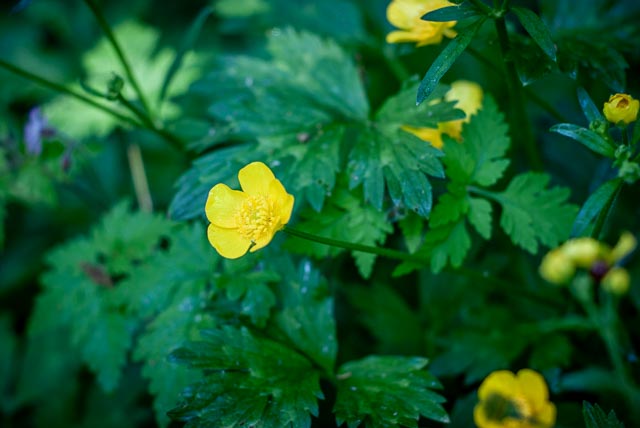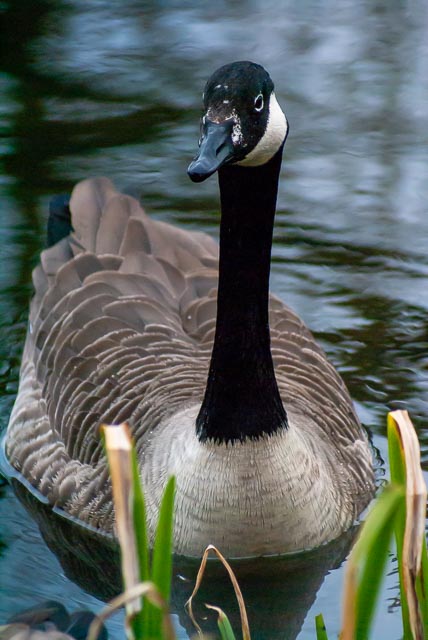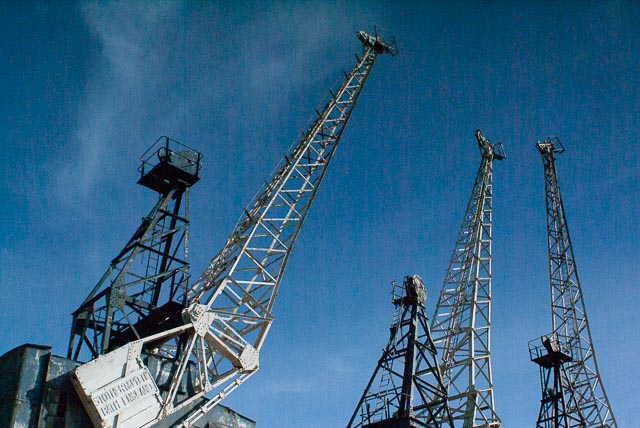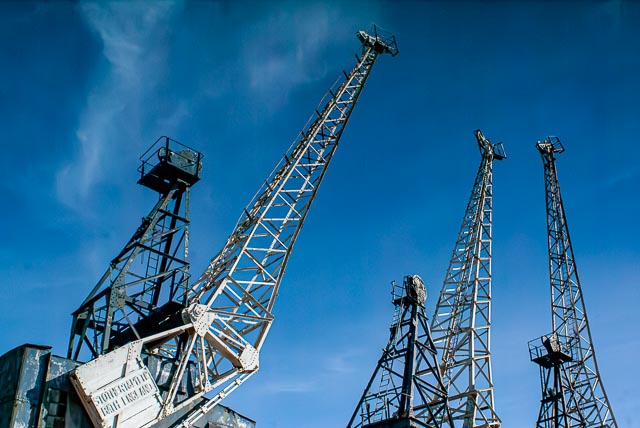Sony Alpha DSLR-A100

Introduction
| Launch date | June 2006 |
|---|---|
| Camera type | Digital SLR |
| Camera size | 638 grams 133 x 95 x 71 mm (inc. battery) |
| Sensor type | CCD |
| Sensor size | APS-C (23.6 x 15.8 mm) |
| Resolution | 3872 x 2592 (10 megapixels) |
| Memory card | Compact Flash (Type I and II) |
| Battery | NP-FM55H |
| Lens | Interchangeable - Minolta/Sony A mount |
If you just want to see some photographs, skip straight to the results section.
In the early to mid naughties, Sony were making some of the most innovative and interesting cameras of all the major camera companies. The subject of this page, the Sony Alpha DSLR-A100 (I'll just call it the Alpha 100 from here on!) wasn't very innovative, but it's still an important part of Sony's campaign to become one of the dominant forces in the photography market alongside Nikon and Canon: it was Sony's very first interchangeable lens camera (ILC). And as everyone knows, you can't claim to be one of the movers and shakers in the photography industry without an ILC!
But it's the history of this camera that makes it particularly interesting. If fact it could be argued that this camera isn't really a Sony at all! It was released shortly after Sony acquired the entire Minolta Alpha mount system after Konica-Minolta left the camera market altogether, meaning Sony saved the considerable time, effort and expense of developing an interchangeable lens system from scratch.
If you're new to digital photography you might be asking yourself 'so who the hell are these Minolta guys?!' But if you're old enough to remember the good old days of film you'll know exactly who they are… Minolta was one of the 5 big film Japanese camera companies (Canon, Minolta, Nikon, Olympus and Pentax) that rose to dominate the photography industry in the 1960s as Germany's influence wained with the move from rangefinder cameras to SLR cameras as the interchangeable lens camera type of choice for the majority of professional, advanced and enthusiast photographers. (As an interesting little side note: that paradigm-shift from rangefinder to SLR cameras was in many ways very like the later move from DSLRs to mirrorless cameras in the digital era!)
Minolta had a particular reputation for innovation, having introduced the worlds first SLR with multiple automatic exposure modes (the Minolta XD-7 in 1977), the first enthusiast SLR with a fully automatical exposure mode (The Minolta X-700 in 1981), and perhaps most importantly and influentially, the world's first SLR camera with body integral auto-focus and a complete range of AF lenses (the Minolta 7000AF in 1985)
 The Alpha 100 can be thought of as an update the previous Konica-Minolta Dynax 7D (of 2004) and Konica-Minolta Dynax 5D (of 2005) and contains, if anything, far more Minolta DNA than Sony DNA, despite the Sony name on the front of the camera. For example: note the weird non-standard flash shoe of the A100. This flash shoe had been used by Minolta since they introduced their 2nd generation Dynax I series autofocus SLR cameras in 1988 (e.g. the Dynax 7000i) and Sony continued to use this flash shoe until 2012 when they finally replaced it with a more standard flash shoe. (Note that Minolta used "Dynax" branding in Europe, "Maxxum" branding in the U.S.A. and "Alpha" branding in Japan for their auto-focus SLR cameras.)
The Alpha 100 can be thought of as an update the previous Konica-Minolta Dynax 7D (of 2004) and Konica-Minolta Dynax 5D (of 2005) and contains, if anything, far more Minolta DNA than Sony DNA, despite the Sony name on the front of the camera. For example: note the weird non-standard flash shoe of the A100. This flash shoe had been used by Minolta since they introduced their 2nd generation Dynax I series autofocus SLR cameras in 1988 (e.g. the Dynax 7000i) and Sony continued to use this flash shoe until 2012 when they finally replaced it with a more standard flash shoe. (Note that Minolta used "Dynax" branding in Europe, "Maxxum" branding in the U.S.A. and "Alpha" branding in Japan for their auto-focus SLR cameras.)
One of the big innovations of the Konica-Minolta Dynax 7D, it's built image stabilisation system (IBIS), was a headline feature of the Alpha 100, which really helped Sony differentiate it from it's competitors. And if you compare the control layout of the Alpha 100 with the Dynax 5D you'll see they are almost identical:

Konica-Minolta Dynax 5D controls on back of camera

Sony Alpha 100 controls on back of camera
+ Specification
Lens Mount |
|
|---|---|
| Sony α mount | YES |
| Compatibility with A-Mount bayonet lenses from Minolta and Konica Minolta | YES |
| Compatibility with all types of Sony α lenses | YES |
Sensor |
|
| Size | 23.6 x 15.8 mm |
| Image sensor colour filter | Primary color |
| Total sensor Pixels | 10.8 Mega Pixels |
| Effective Pixels | 10.2 Mega Pixels |
Camera |
|
| ISO Sensitivity Setting | YES, (Auto, ISO 100 / 200 / 400 / 800 / 1600 equivalent) |
| Automatic White Balance | YES |
| White balance: types of color temperature | 2500 - 9900 k with 19-step Magenta / Green compensation |
| White balance: preset selection | Daylight, Shade, Cloudy, Tungsten, Fluorescent, Flash |
| White balance bracketing | 3 frames, Selectable 2 steps |
| White balance: custom setting | YES |
| A/D Conversion (Bit depth) | 12 |
Super SteadyShot |
|
| System: Sensor-shift mechanism | YES |
| Super Steady Shot compatibility | All Sony DSLR lenses and A-Mount bayonet lenses from Minolta and Konica Minolta |
| Super SteadyShot capability | Approximately 2 EV - 3.5 EV decrease in shutter speed(varies according to shooting conditions and lens used) |
| Super SteadyShot scale (in viewfinder) | YES |
| Camera-Shake warning (in viewfinder) | YES |
Anti-Dust |
|
| Double anti dust system (anti-static coating and CCD shift mechanism) | YES |
Auto Focus System |
|
| AF Area: Local focus area selection | YES (9 local areas) |
| AF Area: Spot | YES (center cross sensor) |
| AF area: wide focus area | YES (Auto with 9 areas) |
| Predictive Focus Control | YES (with moving subjects in AF-A and AF-C) |
| AF Illuminator | YES (with built-in flash) |
| AF Illuminator range | 5m |
| Sensitivity Range (at ISO 100 equivalent) | 0 - 18 EV |
| TTL phase-detection system | YES |
| Eye Start AF System (on off selectable) | YES |
| AF Modes | Continuous, Single Shot, Automatic, DMF (Direct Manual Focus), Manual Focus |
| Sensor | CCD line sensors (9 points, 8 lines with center cross-hair sensor) |
| Focus Lock | YES (with Shutter button or AF button) |
Auto Exposure System |
|
| Light metering type | TTL |
| Light metering cell | 40-segment honeycomb-pattern SPC |
| Light metering: Multi segment | YES |
| Light metering: Center weighted | YES |
| Light metering: Spot | YES |
| Exposure: Scene selection | YES |
| Exposure: Aperture priority | YES |
| Exposure: Shutter priority | YES |
| Exposure: Manual | YES |
| Exposure: Automatic | YES |
| Exposure: Program Auto | YES (with Program Shift) |
| AE Bracketing | With 0.3 EV / 0.7 EV increments, 3 frames; (in "Drive mode setting") |
| Exposure compensation | YES (+/-2.0 EV, 0.3EV steps) |
| AE Lock | YES |
Shutter |
|
| Shutter Speed Range | 1/4000 - 30 seconds and bulb |
| Flash Sync Speed (With Super Steady Shoot Off) | 1/160, 1/125 second |
| Type | Electronically-controlled, vertical-traverse, focal-plane type |
Flash |
|
| Flash Popup | Manual |
| Slow Synchronization | YES (instant access with AEL button) |
| Flash Metering System | ADI / Pre-flash TTL flash metering |
| Wireless flash mode | YES (with optional Flash HVL-F56AM, F36AM) |
| Built-in-Flash Guide Number | 12 meters at ISO 100 |
| Flash Compensation | YES (+/-2.0 EV, 0.3EV steps) |
| Red-Eye Reduction | YES |
| Flash Mode | Autoflash, Fill-flash, Rear flash sync, Wireless off camera flash (with Flash HVL-F56AM, F36AM) |
| Built-in-Flash Recycling Time | 3.0 approx. seconds |
| Automatic Flash | YES (with AUTO, P and Scene selection mode) |
Viewfinder |
|
| Magnification (with 50mm lens at infinity) | 0.83x |
| Eye Relief | Approximately 20 mm from the eyepiece; 16 mm from the eyepiece frame at -1 diopter |
| Focusing Screen | Spherical Acute Matte |
| Diopter Adjustment | -2.5 - +1.0 diopter |
| Field of View | 95% |
| Type | Fixed eye-level system with roof mirror type |
LCD screen |
|
| LCD Total Dot Number | 230000 |
| Brightness adjustable | YES |
| Monitor Type | TFT |
| Screen Size | 2.5 |
| LCD on/off | YES |
Recording |
|
| Recording Format | Jpeg, RAW |
| Continuous-Advance Rate (approx. frames per second at maximum) | 3 fps (Test condition: L size, Fine, Manual focus, Shutter speed over 1/250 sec) |
| Date/Time Print | YES |
| Drive Mode | Single-frame advance, Continuous advance, 10 seconds and 2 seconds Self-timer, Single-frame advance AE bracketing, Continuous-advance AE bracketing, White Balance Bracketing |
| Delete Function | Single, multiple, or all frames in a folder / memory card can be deleted.Folders can be deleted in the File Browse mode |
| Color mode / DEC / Creative styles | STD, VIVID, Portrait, Landscape, Sunset, Night View/Night Portrait, Black & White, Adobe RGB. Except for Adobe RGB, all other color modes use the sRGB color space. |
| Still Image quality | AW, RAW+JPEG, Standard (JPEG), Fine (JPEG) |
| Noise Reduction (Long exp.NR) | Available at shutter speeds longer than 1 Second |
| Recording Media | CF Type I and Type II (MicroDrive); MS Duo and MS Pro Duo (with MS Duo adapter for CF slot) |
| Dynamic Range Optimizer | YES, (Off / Standard-mode / Advanced-mode) |
| Number of Continuous Advance | RAW : max. 6 frames; RAW+JPEG: Max.3 frames ; JPEG L/M/S: No limit (depending on media write speed and shooting condition etc). |
| RAW (pixels) | 10M: 3880 x 2600 |
| Image Size L - JPEG (pixels) | 10M: 3872 x 2592 |
| Image Size M (pixels) | 5.6M: 2896 x 1936 |
| Image Size S (pixels) | 2.5M: 1920 x 1280 |
| Color Space (sRGB) | YES |
Playback/Edit |
|
| White/Black Out Alert | YES |
| Index Playback | YES (4,9 or 16 frames and folder browser function) |
| Enlarge (Maximum magnification) | x12(L) x9(M) x6(S) |
| Auto Image Rotation | YES |
| Image Rotation | YES |
| Information Display | YES |
General |
|
| Depth-of-Field Preview | YES |
| Folder Name Mode | Standard and Date |
| DPOF(Digital Print Order Format) | YES |
| Zone Matching | YES |
| Beep Sound | On / Off selectable |
| Battery Remaining Indicator | YES |
| Remote Release Terminal | YES |
| Operating Temperature (degrees C) | 0 - 40 |
| InfoLITHIUM Battery Indicator | NO |
| File Number Memory | On/ Off selectable |
| Menu Language | English / French / German / Spanish / Italian / Portugese / Dutch / Russian / Swedish / Danish / Norwegian / Finish / Polish / Czech / Hungarian |
| PRINT Image Matching III | YES |
| Indicator of remaining memory space (CF) | YES |
| PictBridge | YES |
| Histogram Indicator | YES |
| Exif Print | YES |
| Exif | 2.21 |
Jacks |
|
| USB Mode | Mass Strage (PC connection) / PTP(PictBridge) |
| USB 2.0 Hi-Speed | YES |
| Video Out | YES (PAL or NTSC) |
Power/Others |
|
| Battery System | LITHIUM Ion NP-FM55H |
| Weight | 545 grams |
| Supplied Battery | LITHIUM Ion NP-FM55H |
| Stamina (battery life in CIPA condition) | 750 |
| Dimensions | Height 94.7mm Depth 71.3mm Width 133.1mm |
Buying a Sony Alpha 100 in 2025
Early digital camera values can be very volatile. When a particular camera gains some traction on the 'net, its value can soar from pennies to £1000s seemingly over night! But at the time of writing (March 2025) the Alpha 100 is still pretty cheap. If you're willing to spend around £100 you should be able to get a working example in very nice condition. When I bought mine back in 2023 I spent £80 for one in good condition from a reputable dealer with a 6 month guarantee, complete with a basic 75-300mm f/4.5-5.6 telephoto zoom lens (which has maybe a £30-40 value).
At those sort of price levels a camera like this still makes a lot of sense for a number of different use-cases: maybe you're a retro-tech geek like me (!) looking to scratch that vintage digital camera itch without ruinous effets on your bank account, maybe you've heard about how great vintage CCD sensors and you're looking for an inexpensive way to test this idea out for yourself, or maybe you want a capable but inexpensive first camera for a kid whose showing signs of interest in photography.
And vintage Minolta AF lenses from the 1980s and 90s that work perfectly on these Sony Alpha DSLRs are also cheap. You can buy a common-or-garden 28mm f/2.8 (which makes a nice slightly wide 42mm equiv. standard lens) for £40-60 or a 50mm f/1.7 lens (which makes a nice 75mm equiv. short telephoto lens for exploring shallow depth-of-field effects) for a similar amount. Budget 2-4 times that for similar vintage AF lenses from Pentax or Nikon!
Using a Sony Alpha 100 in 2025
The Alpha 100 is a mid-range consumer-oriented camera. That means you get good, but largely plastic external construction and a single command dial, rather than the magnesium alloy construction and twin command dials common on high end DSLRS, and the viewfinder is a cheaper penta-mirror one, rather than the bigger brighter pentaprism you'd find in a high-end DSLR, but the view is still pleasant and bright with a reasonable 95% coverage. But you do get a fair few features that lift the Alpha 100 out the the entry level class, such as that 10mp sensor, built-in image stabilisation and something called eye-start autofocusing. When this is switched on focusing starts as soon as you look through the viewfinder and continues to adjust while you're framing your shot without having to half-press the shutter button. This makes it work a lot like continuous autofocusing mode. According to the instruction manual it uses additional battery power when it's stitched on. Because I'm used to shooting in single-shot autofocusing mode 95% of the time I found eye-start autofocusing a bit annoying and generally leave it switched off.
The Alpha 100 is certainly a compact and light-weight DSLR that is no problem to carry around for long periods of time, particularly if used with nice compact lenses like the previously mentioned 28mm f/2.8 and 50mm f/1.7 lenses. The user interface is typical of most DSLRs from this era, i.e. there are very few dedicated dials and most settings are adjusted by pressing a button and rotating the main command dial, but menu-diving is a mercifully rare thing. There is no LCD panel on the top place so all settings are displayed on the rear monitor. A nice touch is that when you holding the camera in portrait orientation, the monitor switches to a vertical display.
There is an auto/manual focusing mode switch on the front of the camera so you can easily switch to manual focusing mode whenever you wish. You do get a confirmation of when you have achieved focus if you keep your finger half-pressed on the shutter button, but that's the only help you'll get achieving focus in manual mode, and that only works if autofocusing would have worked in AF mode. So I'll be sticking to my mirrorless camera when I want to use manual focusing lenses extensively! But it's still useful to be able to easily switch to manual focussing mode if autofocusing refuses to focus on the right thing.
You also get a 10mp sensor that was a little ahead of the curve compared to other 8mp DSLRs available when the Alpha 100 launched in June 2006 (though the competition caught up very quickly!). The sensor is capably of capturing high quality images so long as you're realistic about ISO settings. The Alpha 100 has a maximum ISO setting of 1600, but you don't want to use it unless you really, really have to! Sticking to 100 is advisable, with 800 and 1600 best kept for emergencies only. There is a Auto ISO mode which selects between 100 and 800. It seems very reluctant to go to 800, which is a good thing, and make auto ISO mode useful for general photography.
The sensor of the Alpha 100 is a CCD sensor, which I know will prick up the ears of vintage CCD sensor enthusiasts! I have to admit I'm sceptical about whether CCD sensors really do offer the "film-like" results some people suggest! Read some contemporary reviews of cameras from this period and you'll never see CCD sensors described as in any way film-like! But now I have two 10mp APS-C cameras released within a year of each other, one with a CMOS sensor and one with a CCD sensor, so I'll be posting the obligatory CCD vs. CMOS article soon!
I bought my Alpha 100 as I wanted a cheap and easy way to use the 28mm f/2.8 and 50mm f/1.7 lenses I already owned that came along with film Minolta cameras, and I have to say I have found the experience surprisingly pleasant. The Alpha 100 handles very well and produces excellent results (at least at low ISO settings!). So if you want a trip down memory lane, a Sony Alpha DSLR is a fine vehicle for your journey.
As with any piece of retro-tech that is (at time of writing) 18 years old, you have to cut it it a little slack in some areas! In particular, my example occasionally has difficulty reading the CF memory card it uses as a recording medium. Sometimes when you switch the camera on the card access light will flash for 30 seconds or so and then it'll turn off and the camera just won't operate. 
If this happens to you I would recommend making 100% sure your battery is fully charged and to try your memory card in another camera (if you have a suitable camera nearby). Having removed battery and memory card problems from your enquiries, the final thing to do is simply remove and re-insert your member card a few (or quite a lot of!) times. Eventually my camera started reading the memory card again correctly... fingers crossed this works again next time!
Overall I found the age of the Alpha 100 introduced surprisingly few handling pain-points, so long as you can live without such modern niceties as live-view. And image-quality is also perfectly useable in the modern era, so long as you can live with not going above 400 ISO and rarely print larger than A4.
Sony Alpha 100 results
So with all that said, let take a look at some photos…

Minolta AF 50mm f/1.7 (f/3.2 - 1/100 - ISO200)

Minolta AF 50mm f/1.7 (f/3.2 - 1/100 - ISO200)

Minolta AF 28mm f/2.8 (f/6.3 - 1/250 - ISO100)

Minolta AF 28mm f/2.8 (f/6.3 - 1/250 - ISO100)

Minolta AF 28mm f/2.8 (f/8 - 1/100 - ISO200)

Minolta AF 28mm f/2.8 (f/8 - 1/100 - ISO200)

Sony A 75-300mm f/4.5-5.6 (85mm - f/8 - 1/400 - ISO800)

Sony A 75-300mm f/4.5-5.6 (85mm - f/8 - 1/200 - ISO800)
I am no wildlife photographer… never have been, never will be! But since my Alpha 100 came with a basic 75-300mm zoom lens, I though I might as well have a bit of a go at photographing the ducks, geese, pigeons and crows (and 1 heron!) at a local park near my home with a wee loch at it's center that is popular with birdlife.

Sony A 75-300mm f/4.5-5.6 (85mm - f/8 - 1/400 - ISO800)

Sony A 75-300mm f/4.5-5.6 (200mm - f/5.6 - 1/1000 - ISO1600)

Sony A 75-300mm f/4.5-5.6 (300mm - f/8 - 1/320 - ISO800)

Sony A 75-300mm f/4.5-5.6 (90mm - f/8 - 1/160 - ISO1600)

Sony A 75-300mm f/4.5-5.6 (300mm - f/5.6 - 1/1000 - ISO1600)

Sony A 75-300mm f/4.5-5.6 (210mm - f/5.6 - 1/640 - ISO1600)
Bear in mind, particularly with the ISO1600 photographs above, that viewing these photos at web resolutions tends to hide image noise somewhat! And areas of small detail such as feathers also tend to obscure image noise a little. But when I headed out again with my Alpha 100 the other day to shoot some more test shots I mistakenly left the ISO set to 1600ISO for the whole walk!  The shot below was rather under-exposed too, which made the problem even worse! And areas of flat colour tend to make image noise more visible. So in the first image below all I've done in Lightroom is to add 1 stop of exposure with the exposure slider. As you can see the image noise is plainly visible, not very nice, and hardly film-like! Leaving the ISO setting at 1600 by mistake is something you really don't want to do with this camera!
The shot below was rather under-exposed too, which made the problem even worse! And areas of flat colour tend to make image noise more visible. So in the first image below all I've done in Lightroom is to add 1 stop of exposure with the exposure slider. As you can see the image noise is plainly visible, not very nice, and hardly film-like! Leaving the ISO setting at 1600 by mistake is something you really don't want to do with this camera!
But fortunately the new AI noise reduction feature in Lightroom came to at least a partial rescue, as illustrated in the second image below. The result is perhaps a tad artificial looking, but the I think result would still make a nice 15x10cm or 17.5x12.5cm print.

Minolta AF 28mm f/2.8 (f/14 - 1/2000 - ISO1600)

Minolta AF 28mm f/2.8 (f/14 - 1/2000 - ISO1600 (with noise reduction!)

